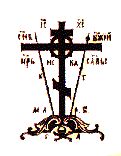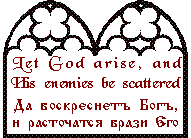
A primary work at this Centre has been the development of a fully rubricated alternative translation of the Gregorian Liturgy.
Because liturgy is always pre-eminently the work of God’s people, it is no less alive than those whose work it is. Over time, however, certain conventions and habits of language and syntax become routinized . . . the modern author Annie Dillard metaphorically suggests that these customary ways of praying amount to “certain words that people have successfully addressed to God without getting killed,” and it is perhaps for this reason among many others (as, for example, love for the words and love for tradition) that liturgical change and evolution can often be seen as revolutionary, counter-cultural, and subversive.
Yet within the traditions, liturgical diversity remains normative. In the Christian East, it is customary to refer to the liturgies of Saints John Chrysostom, Basil, and James as if they alone were the proper fields within which we might address the living God. The traditions associated with the many cultures to which Christianity has migrated, as for example the Armenian, Assyrian, Melkite, Coptic, Malankara, and Maronite, demonstrate eloquently how the one unchanged faith is expressed according to varying cultural norms. Enlivened by the same spirit of accommodation and missionary zeal, in our time, and particularly in North America, several jurisdictions have taken the bold step of conducting worship in English rather than in the language of their ancestors.

In the Christian West, the analogous diversity exists in the ancient rites of such religious orders as the Carthusians, Dominicans, and Cistercians, as well as the local usages of the various dioceses, of which that of Salisbury is perhaps one of the most well-known. In the West also we find the Mozarabic, Celtic and Gallican rites growing out of the devotion and faith of specific cultures and peoples. Though the actions of the Roman council of Trent made for the suppression of many of these local and regional rites, the texts remain to show the deep faith of these people.
Since the 1880’s, the Orthodox Catholic Church of America has supported the recovery and loving restoration of some of these liturgical “museum pieces,” as well as the reconstruction and re-interpretation of old rites for use in the mission field of North America. Moreover, recognizing the dynamic tension between accommodation of culture and preservation of tradition, the OCCA has carefully re-translated and revised rite and ceremonial to enable meaningful, intentional, conscious worship of the one Triune God. As we move confidently into the third millennium of Christianity, we certainly will not turn our backs on the work of our spiritual ancestors; rather, we will build on their work to bring a fresh vision. We would see the venerable traditions anew and bring it to God’s people again; we would worship God according to our “new world” North American cultural world-view; we would show by our words and works that our God lives and that our God is here for everyone.
Three aspects of this text, adopted for pastoral and academic reasons, must be noted. One is the preference for modern, dignified, English usage: it can no longer be said that only the beautiful English of a former day can be suitable for liturgical use; and indeed, it can be argued that the older forms and usages can actually interfere with prayer. The second aspect is the use of the feminine pronoun in references to the Holy Spirit. In the earliest usage, the Hebrew terms ruach, shekhinah, and chokmah are feminine nouns, as is the later Greek term sophia, all of which are traditionally associated with the Holy Spirit. Moreover, feminine imagery for the Holy Spirit is found in the writing of Clement of Alexandria, the Syriac Father Aphraates, and in the third-century Didiscalia. Feminine images for the Holy Spirit may also be found in the apocryphal works The Acts of Thomas and The Gospel of Philip. Not only is this restoration, therefore, more faithful to the very earliest witnesses, but it is remarkable in that it may make the texts and work of worship more accessible to modern Orthodox Christians. Finally, following the usage of some parishes, certain prayers from the Gallican, Sarum, and Byzantine Rites have been rendered into modern English and printed in their proper places in the text.
The result has been a text which treats the ancient received texts with the utmost respect and love, faithful to the sense and to the spirit of the Latin, while enabling a "post-modern" Orthodox Catholic Christian living in a "post-Christian" secular world to easily, faithfully, and effectively worship the Triune God in Whom we live and move and have our being.
In addition to that basic, comprehensive text, there is a modern version of the restored Gallican Rite authorized by the Moscow Patriarchate in 1936. A supplement contains the Dominical and Seasonal Propers for the ecclesiastical year according to the Western Rite.

For Further Information
St. John of Kronstadt Center Main Page
A Commentary on Women in Priesthood
New Paradigms of Ministry for the Third Millennium
Pastoral and Parish Work
Other Links